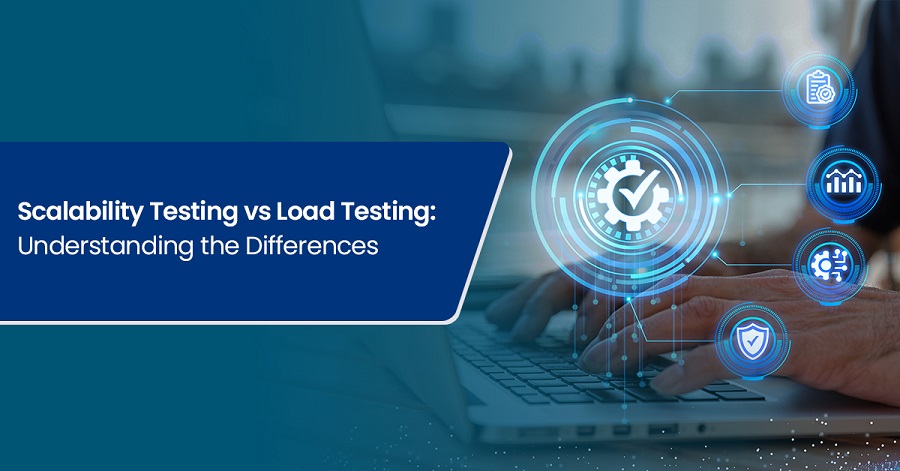A software application works under a tester's hand — it's not enough. Take advantage of load testing services to ensure that the app can work efficiently daily in a production environment.
When it comes to ensuring the effectiveness of a software application, it's paramount to ensure that the application can handle varying degrees of demand. Performance testing is a crucial aspect of the software development cycle. It encompasses various methodologies to ensure the efficiency and reliability of software applications. Two prominent methodologies in this realm are scalability testing and load testing. Each performance testing methodology can address distinct aspects of an application's performance.

Scalability Testing: Preparing for Growth
Scalability testing is an aspect of performance testing that evaluates how well an application can perform with increased user load. The primary objective of this performance testing strategy is to determine how well the program can adapt to a rising dataset or user base without compromising functionality.
Consider a situation where a flash sale causes an increase in visitors to an e-commerce platform. Testing the system's scalability will help evaluate how well it handles the unexpected spike in users, ensuring that response times don't become unpleasant, and the system can adapt to the increased demand.
The scalability testing process gradually increases the workload on the software application and monitors key performance indicators such as response time, throughput, resource utilization, and so on. In this way, scalability testing provides insights into weak areas of architecture that require further improvement.
Load Testing: Assessing Real-World Performance
When it comes to the complete performance testing of a software application, there is no way to skip load testing. Load testing services are designed to evaluate an application's performance under specific conditions to stimulate real-world usage patterns and user loads. Scalability testing focuses on the scalability limit, and load testing concentrates on identifying the breaking point and gauging the system's stability under stress.
Imagine a sudden spike in transaction requests for an online banking system at the end of the month. Load testing effectively determines how well the system handles this peak load and ensures it stays stable and responsive even during high activity.
To simulate real-world user interactions, performance load testing involves creating realistic scenarios that include peak usage periods, transaction volumes, and stressful situations. After that, testers observe how the application reacts to these situations to spot any potential failures or issues with performance that can arise under extreme pressure.
Distinguishing Factors: Scalability Testing vs. Load Testing
Both scalability and load testing fall under the same performance testing umbrella; however, their primary objectives and focuses are significantly different. The goal of scalability testing is to evaluate the application's ability to increase along with the number of users in the future. Load testing, on the other hand, concentrates more on the immediate, looking for issues with performance under actual or expected user loads.
Gradual increases in workload are commonly employed in scalability testing to assess a system's capacity to adapt to minor changes. On the other hand, load testing often involves unexpected peaks or spikes in user activity to assess how effectively the program responds to unexpected shifts in demand.
The Synergy of Scalability and Load Testing
Scalability testing and load testing must be included in a comprehensive performance testing strategy. Load testing validates the application's current stability under actual usage scenarios, while scalability testing ensures it can accommodate future expansion. When combined via performance testing services, these methods offer a comprehensive understanding of the performance capabilities of a software application.
Scalability testing is the initial step in the application performance testing process, where possible issues are found. After scalability is verified, load testing becomes crucial, evaluating how the application performs under various user loads and stress scenarios.
Conclusion
User expectations are rising continuously in the dynamic world of software application development. To deliver reliable and scalable applications, organizations need to greatly rely on performance load testing services. Scalability and load testing are distinct in their objectives but complementary elements of a robust performance testing strategy.
